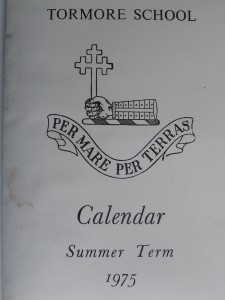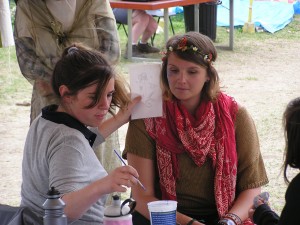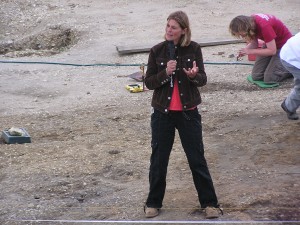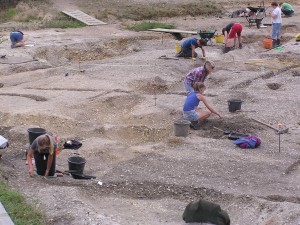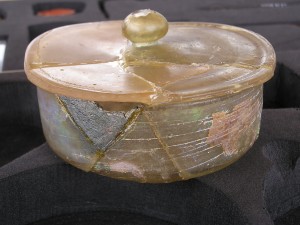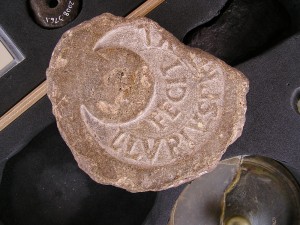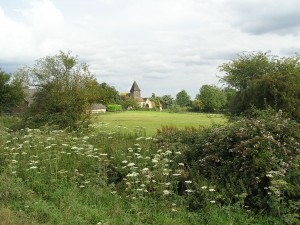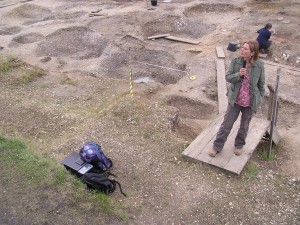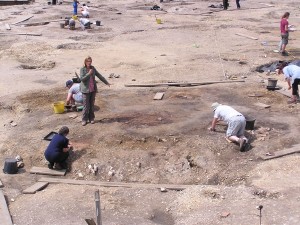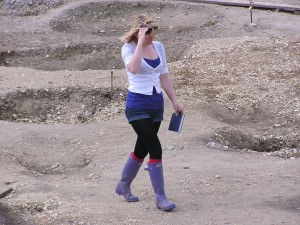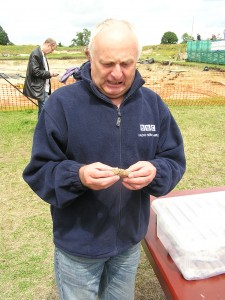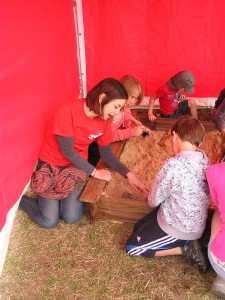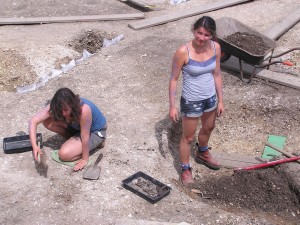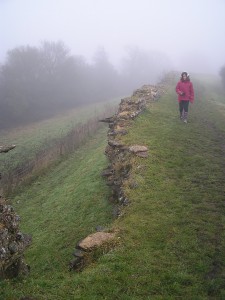The famous ‘Desert Boot’ was invented by Nathan Clark, who died on 23 June 2011. According to the obituaries, he was inspired by the rough suede boots, knocked up in the Cairo bazaar, that had been sported by officers of the Eighth Army during the war.
His design was not immediately appreciated by the stuffy directors of his family firm, James Clark and Sons. They ‘felt that there was something louche about suede as footwear. It was for bohemian and essentially unreliable characters.’
What, then, was one to make of Myles Raven, the legendary Latin and Maths master at Tormore School (my alma mater in Kent), and terror of generations of small boys? Raven, known as ‘Bird’, was reputed to possess forty pairs of suede boots. They lined the skirting board of his bed-sitting-room at the Old House, like soldiers on parade.
It was the horror of having Raven permanently on hand, as much as the lack of plumbing, that made the Old House the most unpopular boarding house at Tormore. As Bird lurched from his room of a morning, to shave from a bowl of boiling water on the landing, one saw far more of his flabby, six-foot-three-inch frame than was palatable. He was quite naked, apart from a white towel that hung precariously from his waist.
If I stole a glance past Raven in the direction of his fetid room, where the curtains seemed to be permanently drawn, it was only to verify the tales I had heard of his suede shoes – he certainly never wore anything else. Raven was dangerously unpredictable. He was prone to terrible, uncontrollable rages, in which his florid face would metamorphose into a livid purple. These were frequently triggered by the failure of individual pupils or an entire form to understand a particular lesson (such as ‘ut’ plus the subjunctive).
As they lined up at his desk to have him mark their work, boy after boy would offer proof of his incomprehension. Bird was like a simmering volcano. Suddenly, he would erupt, scoring his red Bic biro deep into the exercise book of the nearest boy. Others would have their books cast unceremoniously through the open French doors into the garden of the Court House, where they would invariably land in a muddy flower bed or a puddle.
Mercifully, the bell would eventually sound to mark the end of the lesson (potentially a long wait, if it was a ‘double’). Ashen faced, the released boys would alert the incoming form as to what was in store. ‘Birdie’s in a bait,’ they would mutter as they scurried away, leaving the trembling new arrivals to their doom.
A further ordeal was to be placed on Bird’s table at mealtimes. There were about a dozen tables in the school dining room and a further three in the adjacent library, where Bird presided. Each dining set, made up of boys of all ages, would progress weekly between tables, in an anti-clockwise direction. All of us dreaded the three weeks when we would be in the same room as Bird, and particularly the whole week that we would have to spend on his table.
It was particularly distressing to see him devour a substantial cooked breakfast on a daily basis, while we were permanently on short rations. (We were told, unconvincingly, that it was something to do with his diabetes.) He was also prone to revolting coughing fits and, when in one of his moods, was far from pleasant company.
It struck no one as odd that Bird should habitually chain-smoke during his lessons. He was a workmanlike teacher, who believed in learning by rote. Latin tenses and declensions were drummed into us (‘dominus, domine, dominum, domini, domino, domino’; ‘bellum, bellum, bellum, belli, bello, bello’ etc.). I doubt that he found his work rewarding. The hour devoted to ‘prep’ on winter evenings was an unpleasant enough experience, as the form-rooms were unheated. Under Bird’s supervision, it could be considerably worse. Heedless of our discomfort, he would sit outside the 4th Form in his green Sunbeam Rapier, turn the engine on and warm himself by the car’s heater, whilst leaving the door of the form-room wide open so that he could keep an eye on us.
My brother tells another story which illustrates Bird’s remarkable lack of consideration for his charges. The First XI, with my brother as scorer, were conveyed to a fixture at Milner Court in the masters’ cars. It was a pleasant summer’s day and, on the way back, with numerous sweaty boys crammed into the Sunbeam, Bird spotted a stall selling fresh strawberries in a lay-by (my brother passed the spot recently and recognised it at once – it is between Howe Barracks and Littlebourne). Bird hauled himself out of the car, bought two punnets, and proceeded to consume the entire contents in front of the ravenous boys.
Bird’s antics have made more sense to me since I read Michael Barber’s book The Captain, a frank and entertaining biography of his elder brother, the writer Simon Raven. An extravagant, amoral hedonist, sacked from Charterhouse and the army (he had served in Kenya as a Captain in the King’s Own Shropshire Light Infantry), a distracted Simon had been exiled to Deal by his publisher (‘Leave London, or leave my employ’). In my day, he lived in a tiny clapboard cottage across the road from the ‘Admiral Keppel’, which was conveniently positioned only a few doors down from the Old House.
The Raven brothers were both avowed homosexuals, yet Myles had once been engaged – to one of the under-matrons – and Simon had been briefly married. According to Barber, an anguished telegram from his abandoned wife – ‘WIFE AND BABY STARVING SEND MONEY SOONEST’ – had prompted a characteristic reply – ‘SORRY NO MONEY SUGGEST EAT BABY’. His reputation at Tormore was as the author of ‘dirty books’, which some boys’ fathers had read. Shortly after leaving Tormore I read one myself and it was, indeed, utterly filthy. (A typical line of dialogue, from a colonel addressing his mess: ‘I’ve f*****d women from every continent and most animals, but I’ve never had a woman like that!’) I remember the boys of my house, ‘Tanks’, being taken on a school treat to the cinema at Deal, to see On Her Majesty’s Secret Service. Michael Webb briefed us beforehand that all the wittiest lines in the film had been written by Simon, whose name duly flashed up on the screen. Simon also scripted The Pallisers and Edward and Mrs Simpson for television, but it was only after the publication of The Roses of Picardie in 1980 that I became aware of his literary eminence.
The occasional sighting of the caddish Simon caused a certain frisson – usually striding past the school, clad like his brother in a tweed jacket and desert boots, with the same snub nose, prominent eyebrows and florid complexion and the furtive look of a mischievous faun. I have no recollection of ever seeing him on school premises, and wonder if he had been banned (as he was from the Royal St George’s Golf Club). However, my brother assures me that he came into the school regularly to watch our cricket matches, and at one time he wrote witty reviews of them for The School Record.
Simon used to hold court at the ‘Admiral Keppel’, where most of the masters seemed to spend their evenings. Worldy, erudite and amusing, he was, I believe, a strong and, in many ways, beneficial influence on the younger staff, men like Michael Webb and Michael Strevens. I suspect they picked up many of their odder expressions and ideas from him, including – I rather fear – their habit of referring to us boys by rather surprising terms of endearment, including ‘dear heart’ and ‘duckie’.
According to Strevens – the dashing, aloof ‘Strev’ – Myles would consume four or five pints between nine o’clock and closing time and then would stagger home with a further four pints in a jug. He is said to have suffered from appalling flatulence and smelly feet, and also, occasionally, to have wet his bed, but was immune to any form of hangover. He also never wore underpants, a legacy of his own, very peculiar prep school, where they were banned. I have a feeling that we were aware of this surprising detail at the time, but shudder to think how we can have known it. One instinctively shunned him as one would an electric eel. However, I never heard of him touching any boy. Strevens told Barber that Bird had once made a botched attempt at doing so. It had been a humiliating experience and was never repeated.
Myles Raven, described by a school contemporary as ‘the idlest Scholar elected to Charterhouse in living recollection’, must have been frustrated in many ways, but schoolmastering made few demands on him and gave him limitless opportunites to indulge his obsession with cricket, not to mention his illicit fantasies about little boys. I have a vivid memory of his enquiring of us, in a Latin lesson, what part of speech ‘Eheu’ was. No one knew. ‘It’s an ejaculation!’ he said, with relish. He seemed distinctly out of place on his rare trips to London – ‘a big lump who smelt strongly of pubs’, according to one of Simon’s smarter friends. He fell down dead in 1976, at the age of 46.
Read further memories of Tormore: http://www.rupertwilloughby.co.uk/archives/673
Readers comments are extremely welcome. The Administrator apologises if any recent comments have not been published. This is because of his reluctance to sift through the weight of spam that he receives daily through the website! In future, please email your comments to RupertWilloughby@btinternet.com.
